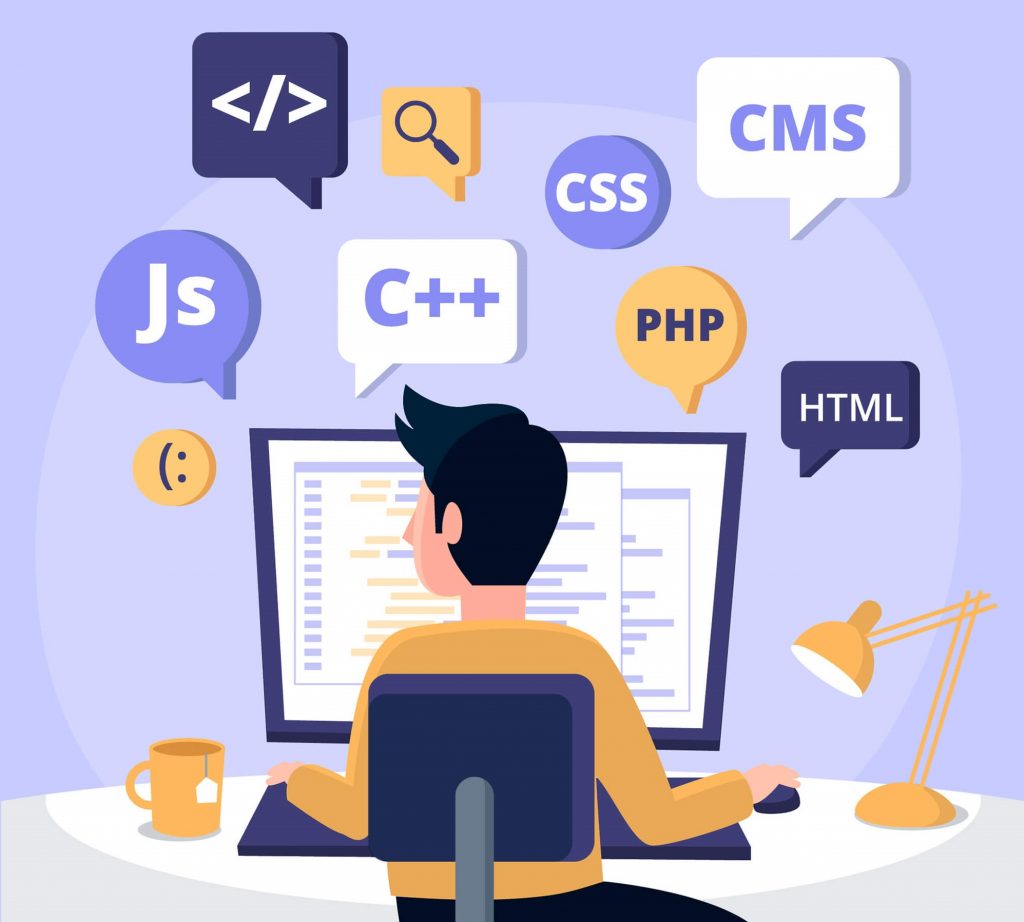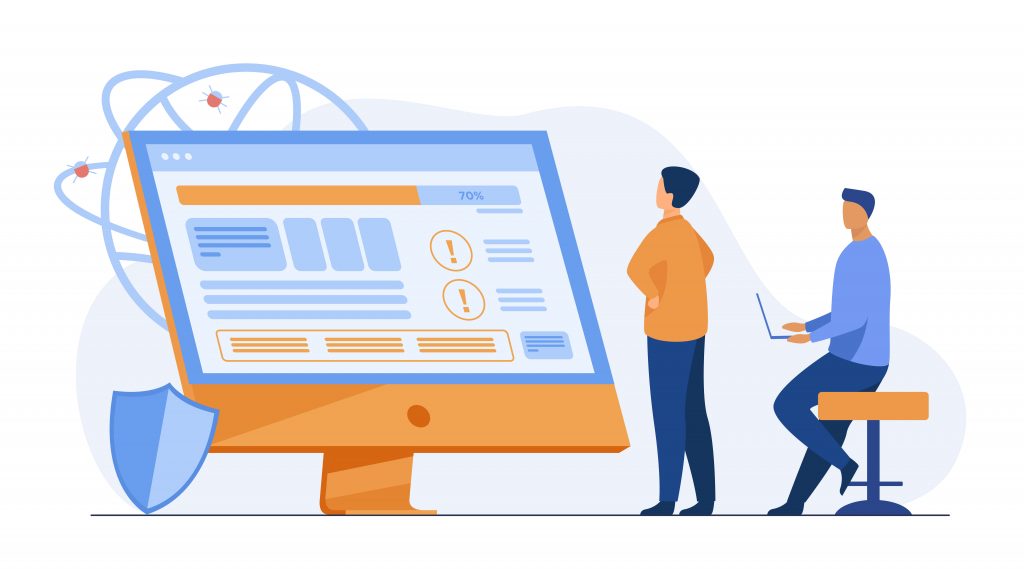
Developing software is not a set in stone method. There is no universal approach to it or the right way to do it. Sometimes a development process fits the software that you are trying to make like skin, but sometimes you have to go for unconventional methods. It all depends on your needs and the type of software that you are developing.
Over the years, enterprise software development has evolved drastically; new methods have surfaced, making the process more streamlined, transparent, and efficient, and older workflows have been discarded. But again, it is an iterative process, and every few years a new development process becomes the hot trend.
And while there is no universally accepted approach to develop software, we do, however, have Software Development Lifecycle(SDLC)- a seven-step software development approach to build, test, and deliver quality software products. While SDLC is widely considered as the best approach to enterprise software development still, it is not a necessity that you use it to develop your software as well. As we said earlier, it depends on the type of software that you are building. With that said, let’s take a look at what SDLC is and talk about its seven steps to develop enterprise software.
What is SDLC?
Software Development Lifecycle is a systematic series of steps to develop and test high-quality software. SDLC allows developers to not only approach software development in a systematic way, but it also allows them to deliver it on time and in the budget. SDLC is a development tracking mechanism, broken into seven steps that are to be carried out in a particular series. Following it makes it easier for the developers to plan the project and offer near-accurate time and cost estimations. Each step in SDLC has its own subprocesses and provides deliverables that are used as input by the next step in the process. SDLC helps in speedy and cost-effective software development, and by increasing visibility and transparency, it helps developers in creating better relations with their customers and decreases project risk.
7-Steps to Develop an Enterprise Software
SDLC is broken into seven steps that are to be carried out in the sequence that has been laid down below. It is to be kept in mind that following this sequence will provide optimal outcomes while deviating from it might not have the desired result.
- Step 1: Requirement Analysis
- Step 2: Feasibility Study
- Step 3: Design
- Step 4: Coding
- Step 5: Testing
- Step 6: Install/Deploy
- Step 7: Maintenance

Each of the above steps has been explained below:
1. Requirement Analysis
Requirement Analysis is the first step in the SDLC process. It is where the board members and stakeholders get together to devise a plan of action and decide what exactly is wanted out of the software. This is where all the operations that are required from the software are laid down.
Once that is done, they can get a clear picture of the amount of effort and money that they will have to put into this project, and a clear timeline is also decided. The scope of the project is finalized in this stage as well, and all the issues that might be faced somewhere down the line are identified too.
Based on the requirements that are laid out in this phase, along with the timeline and the budget, other things are thought of as well. The tools that will be required are bought, the talent needed for this project is hired, etc.
This is the longest and most difficult phase of custom enterprise software development process. Coding is the step in which the deliverables of the previous step are used, and developers start to actually create them, to code them in the language that was decided in the first step.
2. Feasibility Study
This is the second step in SDLC, and the deliverables from the first step are used in this step to create documents. This is also the step where the minor details about the project are finalized as well. And once that is done, all of this data is documented so that everyone knows the plan, and there is no barrier of knowledge.
The deliverable of this step is a Software Requirement Specification document that contains everything that is to be designed, all the data about the software’s dependencies, every minor detail, from the language it will be programmed in, to different use cases, all of it put in this document.
There are five different types of feasibility checks:
- Economic Feasibility: the enterprise asks itself if the product can be finished in the allotted budget or not.
- 3. Legal Feasibility: the enterprise asks itself if the product will work according to the cyber laws and other regulations or not.
- Operation Feasibility: the enterprise asks itself if they can create operations that are expected by the client or not.
- Technical Feasibility: the enterprise asks itself if the project is feasible with the technology that is available currently in the market or not.
- Schedule Feasibility: the enterprise asks itself if the project will be finished in the given time or not.
3. Design
The output of the previous phase, the SRS document, is now used to design the software. Different modules are built and documented, software architecture is developed according to the scope of the project. This is where the nooks and crannies of a project are defined and designed, from the smallest of modules to the overall architecture of the software.
There are two different types of design documents created in this step:
a) High-Level Design:
- A name and a small description for each module
- Interface relationships and dependencies between modules
- Architecture diagrams with technology details
- Database tables
- The functionality of every module
b) Low-Level Design:
- Functional logic of modules
- Database tables with their type and size
- The interface is thoroughly described
- Dependency issues
- Error messages
4. Coding

This is the longest and most difficult phase of the project. Coding is the step in which the deliverables of the previous step are used, and developers start to actually create them, to code them in the language that was decided in the first step.
The software is broken into different modules in the Design step, and so, each developer is given a module, and they have to work on it on their own while their teammates work on their own modules individually. This can also be a process where sometimes developers need some help, especially if it is a new language for them.
The entire team works under a project manager, and it is his responsibility to keep track of all their works. But while tracking is crucial, a project manager must also keep in mind to not push his team members too hard. Coding is a taxing job, and a developer needs to focus, and he cannot do it if you are constantly pushing them to deliver their module.
Once all the modules have been developed, they are put together, and if everything goes as planned and there are no dependency errors or conflicts, then what you have at the end of this process is a fully functioning software, ready for the next step of SDLC.
5. Testing

Once the developed software is ready, it is deployed to the testing environment where a team of QA engineers works with it. Their prime task is to find flaws, glitches, inconsistencies, and bugs, functional or UI/UX, in your software.
They put your software through various testing cycles and conduct different tests to make sure that the final deliverable of the software development process is a high-quality and bug-free software.
Your QA engineers will put your software through different tests, some of them are as follows:
- Code Quality: This testing phase focuses on the coding of each module to make sure that it is easily understandable. When the project is handed over to the end client, chances are he will have his coders poke around in the software as well, or maybe a new coder might be assigned to the project, and he will require a clean code to understand the project.
- Unit Testing: In this testing, individual units of the software are tested by the QA engineers. The idea behind this testing is to make sure that each component of the software works the way it was designed to work.
- Integration Testing: In this testing, the integrations of different software modules are tested. Since different modules were developed by different coders and are then put together, sometimes, it is possible that a tester might pick a bug in which two modules might not be interacting with each other the way they were supposed to. That is why Integration Testing is essential.
- Performance Testing: In this testing, the performance of the software is scrutinized. The QA engineers take a look at the software’s response time, speed, resource utilization, scalability, etc. They also make sure that the software works flawlessly and holds up to certain performance standards even when more than one of its instances are active.
- Security Testing: In this testing, the security of the software is checked. Any backdoor that might have been left open, any threat, vulnerabilities, etc. are all checked in this testing.
6. Install/Deploy
Once the software is tested and free of bugs, it is ready to be deployed and make its way to the stakeholders. If the project manager gives the go-ahead once all the bugs have been fixed, the software is deployed. Some companies also make use of automated deployment tools as well.
7. Maintenance
Once the software has been deployed, it is time to keep it running and upgrade it according to your client’s needs or your stakeholder’s needs. Some new additions to the software, some tweaks in the UI, all of it after the deployment process falls into this step. Regular upgrades and security fixes for the latest cyber threats are also necessary to keep the software safe from outside attacks.
Even after being extra cautious, sometimes some bugs manage to slip past the QA engineers, and they are fixed in this phase when they are flagged by the users or the stakeholders.
Conclusion
There is no fixed process to develop enterprise software, and different developers can use different approaches, but still, the above-mentioned steps will be found in most of these processes in one form or another. So it is crucial for you to know about them. SDLC offers a detailed plan to develop software, compels you to document that plan with even the most minute of details, then design, code, and test that product and finally deploy it and, over the years, maintain it and make sure that it keeps giving the high-quality results.
Three most famous SDLC processes are:
1. Agile
Agile Development is an incremental process that breaks the development cycle into multiple builds. In each build/sprint, the developers and the clients sit together and discuss the goals that they want to achieve. Then the developers work to achieve that target, and during that period, they are in constant contact with the project manager. At the end of every sprint, they show the results to their clients or stakeholders and get new targets.
2. Waterfall
This SDLC process breaks the development process into different phases, and the outcome of one phase is fed to the next one as input. This process involves rigorous document making as well to keep track of the plan and make sure that everything works accordingly.
3. Spiral Model
A risk-driven software development process, spiral SDLC model allows developers to adopt elements of one or more development processes such as incremental, waterfall, and evolutionary incremental, according to the unique risk patterns of a given project.



